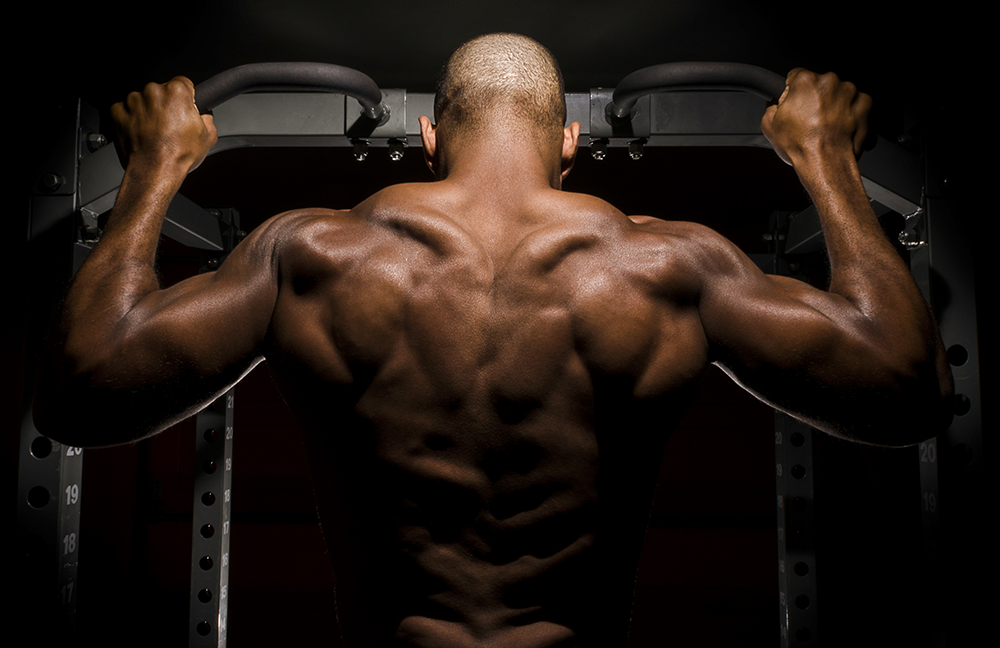Introduction
Walk into any gym, and you’ll hear plenty of advice – some helpful, some outdated, and some downright wrong. From “lifting heavy makes you bulky” to “you must chug a protein shake immediately after working out”, popular gym myths have been circulating for decades. Unfortunately, these misconceptions can hold you back from real progress, leading to wasted effort, slow muscle gains, or even injury.
But here’s the truth: science has disproven many of these so-called “rules” of fitness. With advancements in sports science and the rise of AI-powered fitness tracking apps, we now have clear data on what actually works for strength, muscle growth, and fat loss.
In this article, we’ll break down some of the most common gym myths, explain why they don’t hold up against science, and show you smarter ways to train for real results.
🚀 Let’s separate fact from fiction and uncover the truth behind these fitness myths once and for all!
1. Myth: “Lifting Heavy Makes You Bulky”
One of the most popular gym myths – especially among beginners and women – is the belief that lifting heavy weights will make you bulky. Many people avoid strength training because they fear developing a “bodybuilder physique” overnight.
But here’s the reality: building large amounts of muscle requires a specific combination of intense training, high-calorie intake, and years of consistency. Simply lifting heavy weights won’t magically turn you into a mass monster.
The Problem: Misunderstanding Muscle Growth
- Women, in particular, avoid strength training out of fear of looking “too muscular.”
- Many people think lighter weights with high reps = toning while heavy weights = bulk.
- Social media exaggerates what’s realistically possible for natural muscle growth.
The Truth: Strength Training Builds Lean Muscle, Not Bulk
- Muscle growth happens gradually – it takes years of focused effort to build a noticeably large physique.
- Lifting heavy weights improves muscle tone and definition, not just size.
- Women have lower testosterone levels, making it difficult to gain large muscle mass naturally.
- “Toning” is just fat loss + lean muscle development—there’s no magic rep range for it.
What Science Says
- A study in the Journal of Strength and Conditioning Research found that women who lift heavy weights develop lean muscle and burn fat more effectively than those who only do cardio.
- Progressive overload (gradually increasing weights over time) is essential for muscle definition and strength, but it doesn’t automatically lead to bulk.
Smart Training Solution: Track Your Lifts for Lean Muscle Development
A workout tracking app like Blaze helps ensure your strength training supports lean muscle growth without excessive mass gain.
- Track strength improvements without guessing or overtraining.
- Follow structured progressive overload to build lean, strong muscle efficiently.
- AI-powered insights suggest optimal weight increases for gradual muscle development.
💡 Key Takeaway: Lifting heavy builds strength and muscle definition, not excessive bulk. Proper nutrition and training structure dictate muscle growth – not just weight selection.
2. Myth: “More Sweat = More Fat Burn”
Many gym-goers believe that the more you sweat, the more fat you burn. You’ve probably seen people wearing sweat belts, layering up in hoodies, or pushing themselves to exhaustion, thinking that excessive sweating will help them lose weight faster.
But here’s the truth: Sweating is just your body’s way of cooling down – it has nothing to do with burning fat.
The Problem: Mistaking Sweat for Fat Loss
- Sweating is your body’s temperature control system, not a fat-burning mechanism.
- More sweat does not mean a better workout – it depends on temperature, humidity, and hydration levels.
- Sweat suits and sauna belts don’t lead to real fat loss – they just cause temporary water weight loss.
The Truth: Fat Loss Comes From Caloric Deficit, Not Sweat
- You burn fat when you consume fewer calories than you burn (caloric deficit).
- Sweating depends on external factors, like room temperature and genetics – not necessarily workout intensity.
- Cardio and strength training burn calories whether you sweat a lot or a little.
- Hydration levels affect sweat production – being dehydrated can actually cause you to sweat less.

What Science Says:
- A study in the Journal of Applied Physiology found that sweating does not correlate with fat oxidation – it’s simply your body’s way of regulating temperature.
- Fat loss happens through energy expenditure, not moisture loss – you can have a great fat-burning workout without dripping in sweat.
Smart Training Solution: Track Calories Burned, Not Sweat
Instead of judging workout effectiveness by sweat, use workout tracking apps to monitor your actual performance and progress.
- Track calories burned accurately through training logs and intensity tracking.
- Monitor workout effectiveness based on strength gains, endurance, and recovery – not just sweat levels.
- Use AI-powered insights to adjust your training intensity for optimal fat loss.
💡 Key Takeaway: Sweat is just a cooling mechanism – it doesn’t mean you’re burning fat. Focus on strength, endurance, and calorie balance instead.
3. Myth: “You Have to Train Every Day to See Results”
Many gym-goers believe that training every day is the fastest way to build muscle and burn fat. Some even feel guilty for taking a rest day, thinking that skipping the gym will slow progress. But here’s the truth: Muscles don’t grow in the gym – they grow when you rest. Overtraining can actually slow down results, increase injury risk, and cause burnout.
The Problem: Overtraining & Lack of Recovery
- Training too often leads to overuse injuries and muscle fatigue.
- Without proper rest, muscles don’t have time to rebuild and grow.
- Hormonal imbalances from overtraining can increase cortisol (stress hormone), making fat loss harder.
- Ignoring recovery leads to poor sleep, decreased strength, and stalled progress.
The Truth: Quality Over Quantity in Training
- Strength training 3-5 times per week is more effective than daily workouts.
- Muscle recovery is essential for growth – training breaks down muscle fibers, but they grow back stronger during rest.
- Rest days allow central nervous system recovery, reducing fatigue and boosting performance.
- More isn’t always better—proper programming with intensity and progression matters more than frequency.
What Science Says:
- A study in the Journal of Sports Medicine found that training muscles 2-3 times per week with rest days leads to greater long-term gains than daily training.
- Research suggests 48 hours of rest between intense muscle group training is ideal for recovery.
- Overtraining can suppress testosterone levels and increase cortisol, negatively affecting strength and fat loss.
Smart Training Solution: Schedule Rest Days & Track Recovery
Instead of pushing yourself to train daily, use a workout tracking app like Blaze to balance your training and recovery properly.
- Plan rest days and recovery workouts to prevent burnout.
- Use AI-powered tracking to monitor fatigue levels and recovery trends.
- Ensure progressive overload while balancing training volume with smart scheduling.
- Monitor strength gains & energy levels – not just gym frequency.
💡 Key Takeaway: You don’t need to train every day – proper rest leads to better muscle growth, strength, and fat loss. Smart training beats excessive training.
Train Hard and Smart!
Blaze Workout is a free iPhone app that supports you on your fitness journey. Create custom workouts, track important metrics and compare yourself to the community. All supported by a 24×7 AI assistant.
Take your workout to the next level!
4. Myth: “You Need to Eat Protein Immediately After Your Workout”
One of the most popular gym myths is that you need to chug a protein shake within 30 minutes of finishing your workout – or else your gains will be lost. This so-called “anabolic window” has been heavily promoted in fitness circles, leading people to believe that timing protein intake is more important than overall daily protein consumption.
But here’s the truth: Muscle growth is influenced by total protein intake over the course of the day – not just immediately after your workout.
The Problem: Overemphasizing Post-Workout Protein Timing
- Rushing to consume protein shakes post-workout, even when not hungry.
- Believing muscle breakdown happens instantly if protein isn’t consumed within 30 minutes.
- Ignoring overall daily protein intake, which is actually more important.
- Thinking that protein powder is superior to whole food sources.
The Truth: Total Protein Intake Matters More Than Timing
- Muscle protein synthesis (MPS) remains elevated for several hours after training, meaning you don’t need protein immediately.
- Studies show that spreading protein intake evenly throughout the day is more effective than rushing to drink a shake post-workout.
- Consuming enough total daily protein (0.8-1.2g per pound of body weight) is far more important than precise timing.
- Real food sources like chicken, eggs, fish, and dairy provide the same (or better) benefits as protein shakes.
What Science Says:
- Research in the Journal of the International Society of Sports Nutrition found that the “anabolic window” lasts several hours after training, not just 30 minutes.
- A study published in Nutrients confirmed that total daily protein intake is the primary driver of muscle growth, not immediate post-workout consumption.
- The body continuously repairs and builds muscle throughout the day – not just right after lifting weights.
💡 Key Takeaway: Your muscles grow based on total daily protein intake – not just what you eat right after your workout. Focus on consistency, not just timing.

5. Myth: “High Reps Are for Toning, Low Reps Are for Bulking”
Walk into any gym, and you’ll likely hear someone say, “Do high reps if you want to tone and low reps if you want to bulk.” This myth has been around for decades, convincing people that light weights with high reps burn fat while heavy weights with low reps build massive muscle.
But here’s the truth: Your body composition (muscle definition vs. size) is determined by diet and overall training volume, not just rep ranges.
The Problem: Misunderstanding How Muscle Growth & Fat Loss Work
- “Toning” isn’t real – muscles don’t tone, they grow or shrink.
- High reps don’t “burn more fat” than low reps – it’s diet that determines fat loss.
- Low reps don’t automatically make you “bulky” – muscle size is a result of training volume and calorie intake.
- Neglecting heavy weights leads to slower strength gains and less muscle retention.
The Truth: Both High & Low Reps Build Muscle – The Key is Training Volume
- Muscle definition is a result of fat loss, which comes from a calorie deficit – not rep range.
- Both high and low reps can build muscle, depending on training intensity and progressive overload.
- Training with heavier weights improves strength, while moderate-to-high reps improve muscular endurance.
- The best rep range for muscle growth (hypertrophy) is 6-12 reps, but muscles grow in a variety of ranges.
What Science Says:
- A study published in the Journal of Strength and Conditioning Research found that muscles grow with both heavy (low-rep) and moderate (high-rep) training, as long as total volume is high enough.
- Research in Sports Medicine confirmed that muscle hypertrophy occurs with various rep ranges, as long as the muscles are trained to failure.
- Fat loss happens through a caloric deficit, not a specific rep range.
Smart Training Solution: Train for Strength & Muscle Growth, Not Myths
Instead of choosing a rep range based on myths, use Blaze Workout Tracker to optimize your training for strength, endurance, and fat loss.
- Log and adjust reps based on training goals – whether for strength, endurance, or hypertrophy.
- Use AI-powered insights to track progressive overload in both high and low rep ranges.
- Follow a structured strength program that balances both heavy and moderate lifting.
- Monitor body composition trends to focus on fat loss rather than “toning.”
💡 Key Takeaway: Your rep range doesn’t determine whether you “tone” or “bulk.” Training intensity, progressive overload, and diet play the biggest role in body composition.
6. Myth: “Cardio Kills Muscle Gains”
Many lifters believe that doing cardio will make them lose muscle, which leads some to avoid cardio altogether. While excessive cardio without proper nutrition and strength training can interfere with muscle growth, the truth is that cardio – when done correctly – can actually improve your muscle-building potential. Let’s break down the real relationship between cardio and muscle gains.
The Problem: Fear of Losing Muscle from Cardio
- Avoiding cardio completely due to the fear of losing muscle mass.
- Believing cardio burns muscle instead of fat when in a calorie deficit.
- Thinking all cardio is the same – long-distance running and HIIT affect muscle differently.
- Neglecting heart health and endurance, which are essential for overall fitness.
The Truth: Cardio & Strength Training Can Coexist
- Muscle loss only happens when you’re in a prolonged calorie deficit and neglect strength training.
- Moderate cardio (2-3 sessions per week) can enhance endurance and aid in recovery.
- Low-intensity steady-state (LISS) cardio doesn’t interfere with muscle gains and can improve fat loss.
- HIIT (High-Intensity Interval Training) can actually boost muscle retention while increasing calorie burn.
What Science Says:
- A study in the Journal of Applied Physiology found that cardio combined with strength training does not inhibit muscle growth unless done in extreme amounts.
- Research in Sports Medicine showed that HIIT-style cardio preserves muscle mass better than long-distance endurance training.
- Proper nutrition (especially protein intake) prevents muscle breakdown, even with regular cardio.

Smart Training Solution: Optimize Cardio Without Losing Muscle
Instead of avoiding cardio, use Blaze Workout Tracker to incorporate the right balance of cardio and strength training.
- Plan cardio strategically – LISS for recovery, HIIT for conditioning, and moderate-intensity for endurance.
- Use AI-powered insights to monitor how cardio impacts strength gains.
- Track calorie burn and muscle retention with HealthKit integration.
- Ensure progressive overload in strength training while keeping cardio in balance.
💡 Key Takeaway: Cardio only “kills gains” if overdone without proper nutrition. Balanced cardio can enhance recovery, endurance, and fat loss while preserving muscle.
7. Myth: “Crunches Are the Best Way to Get Abs”
It’s a common sight in gyms – people cranking out hundreds of crunches daily, hoping to reveal a shredded six-pack. Many believe that doing ab exercises will burn belly fat and make their abs visible. But here’s the truth: No amount of crunches will give you visible abs unless your body fat percentage is low enough. Let’s bust this popular gym myth and reveal what actually works for getting abs.
The Problem: Believing in Spot Reduction
- Thinking crunches burn belly fat – fat loss happens across the whole body, not just in one area.
- Ignoring diet and overall fat loss – abs are revealed in the kitchen, not just in the gym.
- Overemphasizing crunches instead of core stability – a strong core is built through compound movements.
- Neglecting progressive overload in core training, leading to inefficient workouts.
The Truth: Abs Are Made in the Kitchen & Built with Resistance
- You can’t spot-reduce fat – your body loses fat in a genetically predetermined way.
- Fat loss comes from a calorie deficit, meaning your diet plays the biggest role in revealing abs.
- Compound exercises like deadlifts, squats, and overhead presses engage the core more effectively than crunches.
- Weighted ab exercises (cable crunches, hanging leg raises) are more effective than high-rep bodyweight crunches.

What Science Says:
- A study in The Journal of Strength and Conditioning Research found that spot reduction (losing fat in one specific area) is a myth – fat is lost evenly across the body.
- Research in Sports Medicine showed that high-resistance core exercises (e.g., hanging leg raises, cable crunches) are more effective at strengthening and defining abs than standard crunches.
- Diet plays the biggest role in making abs visible – you need a low enough body fat percentage to see them.
Smart Training Solution: Train Core the Right Way & Track Fat Loss
Instead of wasting time on endless crunches, use Blaze Workout Tracker to optimize core training and fat loss.
- Follow a structured fat-loss plan that combines strength training, cardio, and nutrition tracking.
- Incorporate compound lifts that engage the core (deadlifts, squats, planks).
- Use AI-powered workout tracking to add progressive overload to core exercises.
- Monitor body composition changes to focus on fat loss, not just ab workouts.
💡 Key Takeaway: Crunches don’t burn belly fat – fat loss happens through proper nutrition and full-body training. For a strong core, focus on resistance-based ab exercises and compound lifts.
8. Myth: “You Have to Lift Heavy to Build Muscle”
A common belief in the gym is that lifting heavy is the only way to build muscle – that if you’re not going all out with heavy weights, you won’t see real gains. While progressive overload is key, lifting super heavy isn’t the only way to stimulate muscle growth. The truth? Muscles grow from tension, not just from lifting the heaviest weights possible.
The Problem: Believing Heavy Weights Are the Only Answer
- Focusing only on lifting heavier instead of improving time under tension and form.
- Neglecting higher rep ranges and different training techniques.
- Risking injury by ego-lifting and using poor technique.
- Ignoring the importance of volume and consistency in muscle growth.
The Truth: Muscle Growth Happens in Multiple Ways
- Progressive overload isn’t just about weight – it’s about increasing reps, time under tension, and improving movement quality.
- Lifting moderate weights with controlled reps and higher volume also stimulates hypertrophy.
- Machines, bodyweight exercises, and resistance bands can still build muscle.
- Using a variety of rep ranges (6-12 reps for hypertrophy, 12+ for endurance) leads to well-rounded strength gains.
What Science Says:
- A study in the Journal of Strength and Conditioning Research found that both heavy (low-rep) and moderate (high-rep) training can stimulate muscle growth, as long as volume is sufficient.
- Research in Sports Medicine confirmed that lifting moderate weights to failure is just as effective for hypertrophy as lifting heavy weights.
- Time under tension (TUT) – the amount of time a muscle is under strain during a lift – plays a crucial role in hypertrophy.
Smart Training Solution: Track Strength & Volume, Not Just Weight
Instead of only chasing heavy weights, use Blaze Workout Tracker to train smarter by balancing weight, volume, and intensity.
- Track your progressive overload in multiple ways – weight, reps, tempo, and TUT.
- Use AI-powered insights to optimize training intensity without overloading joints.
- Monitor workout volume to ensure steady muscle growth.
- Follow structured strength programs that balance heavy lifting with higher-rep training.
💡 Key Takeaway: Lifting heavy is just one way to build muscle. Controlled, high-volume training and progressive overload in multiple forms lead to muscle growth without unnecessary joint strain.

9. Myth: “Lifting Weights Stunts Growth”
One of the oldest popular gym myths – especially when it comes to young athletes – is the belief that lifting weights can stunt growth. Many parents and coaches still think that strength training is harmful for kids and teens, fearing it will damage growth plates and limit height potential.
But here’s the truth: There is no scientific evidence that lifting weights stunts growth. In fact, strength training can be highly beneficial for young athletes, improving bone density, strength, and injury prevention.
The Problem: Fear of Strength Training for Young Lifters
- Parents and trainers discourage young athletes from weightlifting, fearing long-term damage.
- Belief that growth plates close prematurely due to lifting heavy weights.
- Assuming bodyweight exercises are safe but external resistance (weights) is harmful.
- Ignoring the benefits of strength training for developing coordination, strength, and injury resistance.
The Truth: Strength Training Supports Healthy Growth
- Weightlifting does not stunt growth – bone growth is primarily determined by genetics and nutrition.
- Properly structured resistance training strengthens bones and joints, reducing the risk of fractures.
- Growth plates close naturally in late adolescence, regardless of weight training.
- Many elite athletes start strength training in their teens with no negative effects on height.
What Science Says:
- A study published in the Journal of Pediatrics found that supervised resistance training in children and adolescents improved bone density, coordination, and strength without negative effects on growth.
- Research in Sports Health showed that youth weight training helps prevent sports-related injuries and improves overall athletic performance.
- The National Strength and Conditioning Association (NSCA) supports strength training for young athletes when done with proper supervision and technique.
Smart Training Solution: Track Safe & Effective Strength Training
Instead of avoiding weightlifting, young athletes can use Blaze Workout Tracker to train safely and progressively.
- Track weight increases to prevent overloading joints and growth plates.
- Use AI-powered insights to optimize training intensity for youth and beginner lifters.
- Follow structured strength programs designed for safe progression.
- Monitor progress and recovery to ensure balanced training without excessive strain.
💡 Key Takeaway: Weightlifting does not stunt growth. Properly supervised strength training can enhance athletic performance, strengthen bones, and reduce injury risk in young athletes.
10. Myth: “Muscle Turns to Fat If You Stop Training”
One of the biggest popular gym myths is the idea that if you stop lifting weights, your hard-earned muscle will magically turn into fat. This misconception has led many people to fear taking breaks from training, thinking that their physique will rapidly deteriorate.
But here’s the truth: Muscle and fat are two completely different types of tissue – one cannot “turn into” the other. What actually happens is a shift in muscle loss and fat gain due to changes in activity levels and calorie intake.
The Problem: Confusing Muscle Loss with Fat Gain
- People believe that muscle “transforms” into fat when they stop training.
- Lifters fear taking rest periods, believing they will get fat overnight.
- Muscle loss and fat gain can happen simultaneously, leading to the illusion of “conversion.”
- A decrease in metabolism after stopping training can lead to weight gain if diet isn’t adjusted.
The Truth: Muscle & Fat Are Completely Different Tissues
- Muscle does not turn into fat—if you stop training, muscle mass simply shrinks due to inactivity.
- Fat gain happens from eating more calories than you burn – not from muscle loss.
- Maintaining protein intake and light activity can slow down muscle loss during breaks.
- Strength training helps keep metabolism high, so stopping abruptly without adjusting diet can lead to fat gain.
What Science Says:
- A study in The American Journal of Physiology found that muscle loss happens due to inactivity (muscle atrophy), while fat gain results from excess calorie intake.
- Research in Medicine & Science in Sports & Exercise confirmed that muscle is maintained longer with occasional resistance training, even if workouts decrease.
- Muscle and fat cells are separate biological structures—one does not turn into the other.
Smart Training Solution: Track Progress Even During Breaks
Instead of fearing muscle loss, use Blaze Workout Tracker to monitor body composition and maintain fitness levels even when not training intensely.
- Track body measurements and muscle mass changes to adjust diet and activity accordingly.
- Use Blaze’s AI-powered insights to receive recommendations for maintaining strength.
- Plan deload weeks and recovery phases to prevent excessive muscle loss.
- Stay active with low-intensity workouts or bodyweight training to slow muscle atrophy.
💡 Key Takeaway: Muscle does not turn into fat. If you stop training, muscle shrinks due to inactivity, and fat gain happens from excess calories – not from muscle “conversion.”
Conclusion: Stop Believing Gym Myths – Train Smarter!
We’ve busted 10 of the most popular gym myths – from the belief that lifting heavy makes you bulky to the myth that cardio kills muscle gains.
What we now know:
- Lifting heavy builds strength, not bulk.
- Sweating doesn’t equal fat loss.
- Training every day isn’t necessary for results.
- Cardio and strength training can coexist.
- You don’t have to eat protein immediately after workouts.
- Crunches won’t give you abs – diet and core strength matter more.
- Muscle doesn’t turn into fat – it shrinks from inactivity.
Your Next Steps: Train Smarter, Not Harder!
- Download Blaze Workout Tracker to stop guessing and start training with real, data-driven insights.
- Follow structured training plans designed for long-term muscle growth.
- Track strength, recovery, and body composition to optimize your results.
- Use AI-powered coaching to eliminate gym myths and train based on science.
Ditch the myths, embrace smart training, and start making real progress today!













